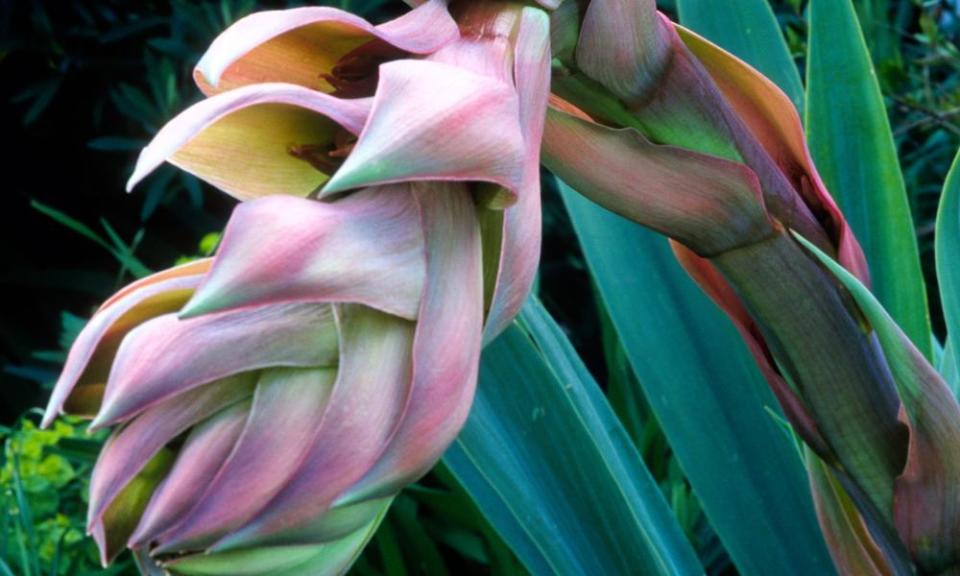Superb exotics that don’t grow in the tropics

In the long cold months of this winter, I have spent ages scrolling longingly through page after page of gloriously glossy images of tropical landscapes on various Instagram feeds.
Whether it’s rope bridges festooned in flowers in the Costa Rican jungle or my own videos of favourite adventures spent wandering through the lush and verdant greenery of Singapore, it’s my horticultural coping mechanism. It’s what I do when I have a desperate urge to see light and life around me.
Flower spikes of Beschorneria reach heights of up to 1.5m and look like something from a Dr Seuss book
Yet, there are some species out there that look like they have popped straight out of a Rousseau painting. These exotic and fantastic plants are not only cold-hardy, but actually are so suited to cool climates that they can’t actually be grown in the lowland tropics – despite what we may think.
While many of the traditional favourites for UK-growable exotics, such as Chusan palms and Tasmanian tree ferns are well known, some of the most striking examples languish in relative obscurity, and perhaps the best example of these for my money is the beschorneria, otherwise known as the Mexican lily. The agave-like rosettes of its dark green and wavy foliage are incredibly architectural, but unlike their doppelgängers are soft and pliable, and crucially don’t end in sharp spikes: something you will really thank them for at planting time.
Beschorneria won’t require the creation of specialist beds filled with gravel to give them the super-fast drainage that agaves require either, and their fast-growing nature also means they are incredibly affordable compared to many of the slower-growing exotics: waiting for an agave, palm or tree fern to mature and fill space can literally take decades and cost at least 10 times the amount.
Add to that the fact that throughout the summer towering flower spikes will erupt from the centres of these rosettes and reach heights of up to 1.5m, in shades of green or white on curious powder-pink stems, making them look like something from a Dr Seuss book, and you have a great alternative exotic that is available to far more people to grow, and yet is far more unusual than many of the exotic staples.
Perhaps the most common variety is Beschorneria yuccoides, which has been granted the Award of Garden Merit by the RHS. It is hardy down to as low as -8C if given a little winter protection, making it a growable option in sheltered spots for much of the country, or a potted specimen that can be brought indoors in the coldest weather.
Grown in full sun, it has a gorgeous silver sheen to its leaves, particularly in the cultivar ‘Quicksilver’. B albiflora swaps the green and yellow flowers of its more common cousin with pale white blooms, and even has the habit of slowly forming a trunk up to 1.5m tall.
Now for the catch – and there is only one I can think of – these poor fellows are sadly quite vulnerable to slug attack, albeit nowhere near as much as, say, hostas. So you will have to watch out for these, but with everything else going for them, I think they are well worth trying out. If for nothing else than the knowledge that gardeners in far more idyllic climes can only dream of growing something so beautiful.
Follow James on Twitter @Botanygeek

